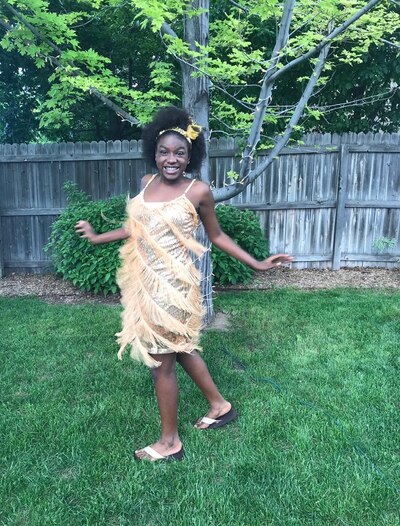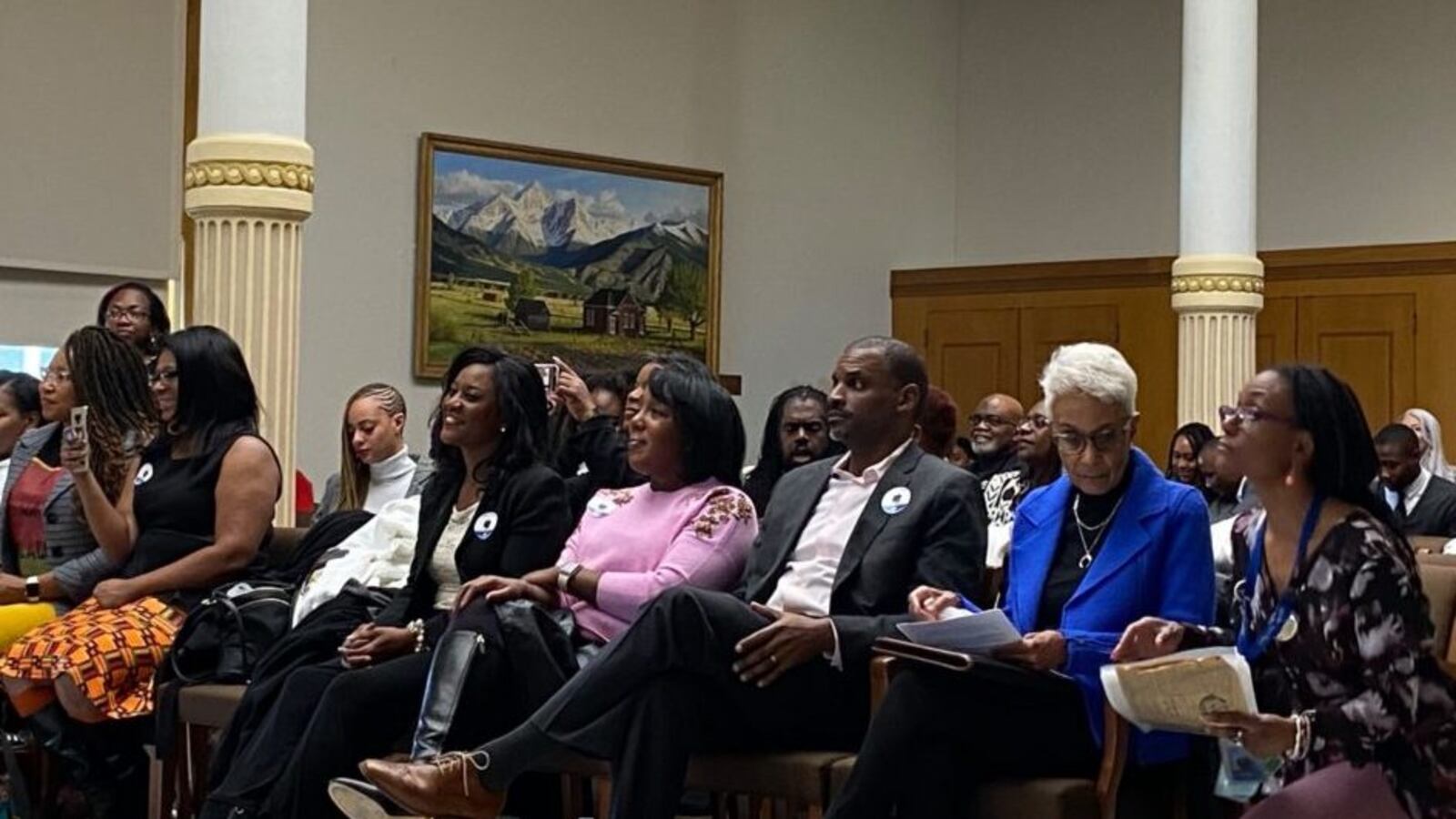Update: The bill passed the Senate on Feb. 28 and now heads to the governor’s desk for his signature.
Milani Cook remembers sitting between her mother’s legs as a little girl, wincing at each tug as her mother ran a comb through her hair. When it was all over, Milani was so proud of the afro she saw in the mirror.
But when she went to school, her white classmates would reach out to touch it. She felt like a pet dog, and she would return home with her hair and her spirit deflated. In middle school, insults joined the unwanted touching. She looked like a sheep, classmates told her. Did she have a mop on her head?
“Fascination,” she said, “turned to discrimination.”
Eventually Cook, now 15 and a student at Grandview High School in the Cherry Creek district in suburban Denver, started straightening her hair to avoid such comments, doing long-term damage to it in the process.
“I think about what would have happened if my school and community had protected me from all those years of humiliation,” she wrote in testimony to Colorado lawmakers.
A bill making its way through the Colorado legislature would extend existing laws prohibiting discrimination based on race and ethnicity to explicitly cover hairstyles — including the locks, twists, braids, and afros worn by many black people. The protections would apply to employees on the job and to students in school, and school districts and charter schools would be required to prevent bullying based on hair just as they are required to prevent bullying based on race, religion, and disability status.
“Schools need to protect our young people and educational professionals against bullying or termination based on hairstyle,” said state Rep. Leslie Herod, a Denver Democrat and the bill’s primary sponsor.
Three other states already have adopted what is known as a Crown Act. The acronym stands for Create a Respectful and Open Workplace for Natural Hair, but the name more broadly speaks to the importance of hair in many cultures. Colorado is one of 13 states considering legislation this year, according to a coalition tracking the effort.
Highly publicized incidents — including a New Jersey wrestler who was made to cut off his locks to compete in a tournament and a Texas student whose school won’t allow him to walk at graduation unless he does the same — have spurred a national push to extend discrimination laws to apply to hair. Corporations such as Dove, the personal care brand, have joined in support.
Colorado hasn’t been immune. Last year, a mother said her 11-year-old daughter was kicked off her Denver cheerleading team due to her natural hair. (The team’s director said the mother threatened staff.) And state Rep. Janet Buckner, an Aurora Democrat, said her own granddaughters felt pressure to have the same kind of tight ponytail as the white girls on their gymnastics team.
“I do not want my granddaughters to lose their self-confidence because other people are not comfortable with their natural hairstyles,” Buckner said at a recent committee hearing.
Buckner joined Herod, state Rep. Dominique Jackson, and state Sen. Rhonda Fields, all black women and Democrats, in sponsoring the Colorado Crown Act. They launched the bill with a “community hearing” before the formal committee meeting that featured such prominent figures as dancer Cleo Parker Robinson and Reynelda Muse, Denver’s first black television anchor, who described facing pressure to straighten their hair even at the heights of their careers.
The Colorado Crown Act does not currently face any organized opposition, but Republicans on the House Business Affairs and Labor Committee voted against it.
“Where does a business-environment look end and racism begin?” asked state Rep. Shane Sandridge, a Republican from El Paso County, who compared workplace rules around hair to requirements that people in the financial services sector wear a white shirt and tie.
With Democrats controlling all levers of state government, partisan opposition will not stop the bill from becoming law.
It’s not clear how many Colorado schools have prohibitions against natural hair in their dress codes. No one testified against the bill at the committee hearing, and the organizations that represent Colorado school districts and charter schools have said they have not heard any concerns from their members.
But as stories like Milani Cook’s make clear, hair discrimination in schools is not simply a matter of what is or isn’t banned in dress codes. While her teachers would remind her classmates to keep their hands to themselves, she felt those early incidents could have been taken much more seriously. If the legislation passes, she hopes teachers and school leaders will do more to protect black children from harassment.
FIRST PERSON: My school policed our black male students’ hair. The viral forced-haircut video showed me how wrong we were.
Analise Harris, a former Denver Public Schools teacher who founded an organization called Curls on the Block to help black girls learn to love and care for their natural hair, said this, too, needs to be a matter of policy, not something left to chance.
“We need to make sure we’re providing spaces that are culturally responsive,” said Harris, who has taught elementary, middle, and high school. “For youth, they are curious. It’s a normal curiosity. But teachers need to use that opportunity to say, ‘This is where we learn about boundaries and personal space.’ Because generally, the curiosity is not coming from the black kids touching the white kids’ hair.”
Harris said educators can also take proactive steps to make discrimination less likely. For example, teachers can make sure the images they use in their classroom include people with a variety of hairstyles and incorporate the ways that black hair has been policed and regulated in their U.S. history lessons, she said. At various points, black women have been forced to shave their hair or been required by law to cover their heads.
Unwanted touching and bullying about hair does not only affect black children. Nikhil Mankekar, the chair of Boulder’s Human Relations Commission, is Sikh and wears his hair long and his beard untrimmed as part of a practice called kesh. He told lawmakers that Sikh children in the United States frequently have their hair yanked in school, and some experience persistent bullying or even have their hair forcibly cut. Native American boys who wear their hair long have also experienced bullying and pressure to cut it.
The bill does not explicitly address another styling issue that primarily affects black youth: bandanas and durags. Many school dress codes ban these types of head-coverings, with the justification being that they’re associated with gang membership.

Harris recalled an incident in a Denver school in which a girl ended up suspended because she didn’t want to take off a pink bandana that violated school dress code. Underneath the bandana, her hair wasn’t finished.
“I don’t know which gang is the pink bandana gang,” Harris quipped. Such incidents become part of the school-to-prison pipeline, with hair becoming one more area in which black students receive disproportionate discipline, Harris said.
Back in 2016, a 14-year-old Denver girl was forcibly dragged from a restroom at Northfield High School, handcuffed, and charged with assault and resisting arrest in an incident that started with being told to remove a purple bandana. After a community outcry, charges were dropped.
“What it really associates with is people who wear their hair natural and have to tie it down,” Cook said. “And I find it interesting that something that African American people wear is associated with gangs. I definitely think that’s another change I would make.”
Cook has regained her confidence in her hair, but her past experiences still shape the decisions she makes on a daily basis.
“I still don’t wear it out that much at school,” she said. “I wear it out more on the weekends. Just in case.”

